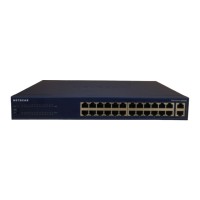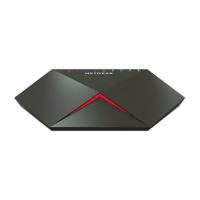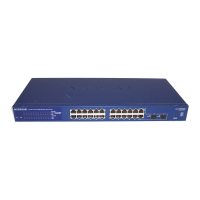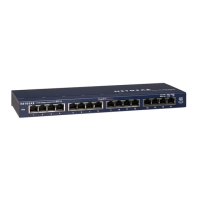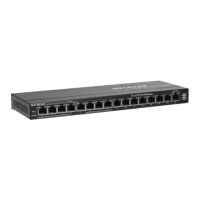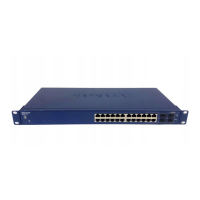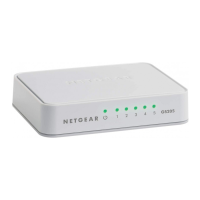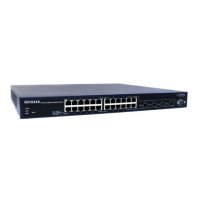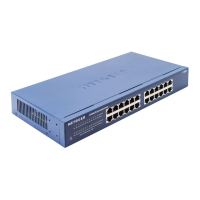Monitoring the System
333
S3300 Smart Managed Pro Switch
Event Logs
Use the Event Logs screen to display the event log, which is used to hold error messages for
catastrophic events. After the event is logged and the updated log is saved in flash memory,
the switch will be reset. The log can hold at least 2,000 entries and is erased when an
attempt is made to add an entry after it is full. The event log is preserved across system
resets.
To view the event logs, select Moni
toring > Logs > Event Logs.
The following table describes the event log information displayed on the screen.
Table 107. Event log information
Field Description
Entry The number of the entry within the event log. The
most recent entry is first.
Type Specifies the type of entry.
Filename The switch source code filename identifyin
g the code that detected the event.
Line The line number within the source file of the code that detected the event.
Task ID The OS-assigned ID of the task reporting the event.
Code The event code passed to the event log hand
ler by the code reporting the event.
Time The time the event occurred, measured from the previous reset.
Mirroring
The Port Mirroring screen allows you to view and configure port mirroring on the system.
Port mirroring selects the network traffic for ana
lysis by a network analyzer. This is done for
specific ports of the switch. As such, many switch ports are configured as source ports, and
one switch port is configured as a destination port. You can configure how traffic is mirrored
on a source port. Packets that are received on the source port, that are transmitted on a port,
or are both received and transmitted, can be mirrored to the destination port.
The packet that is copied to the destination port is in the
same format as the original packet
on the wire. This means that if the mirror is copying a received packet, the copied packet is
VLAN tagged or untagged as it was received on the source port. If the mirror is copying a
transmitted packet, the copied packet is VLAN tagged or untagged as it is being transmitted
on the source port.
Use the Port Mirroring screen to define port mirroring sessions.
To configure port mirroring:
1. Select Mo
nitoring > Mirroring > Port Mirroring.
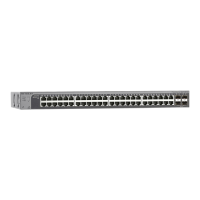
